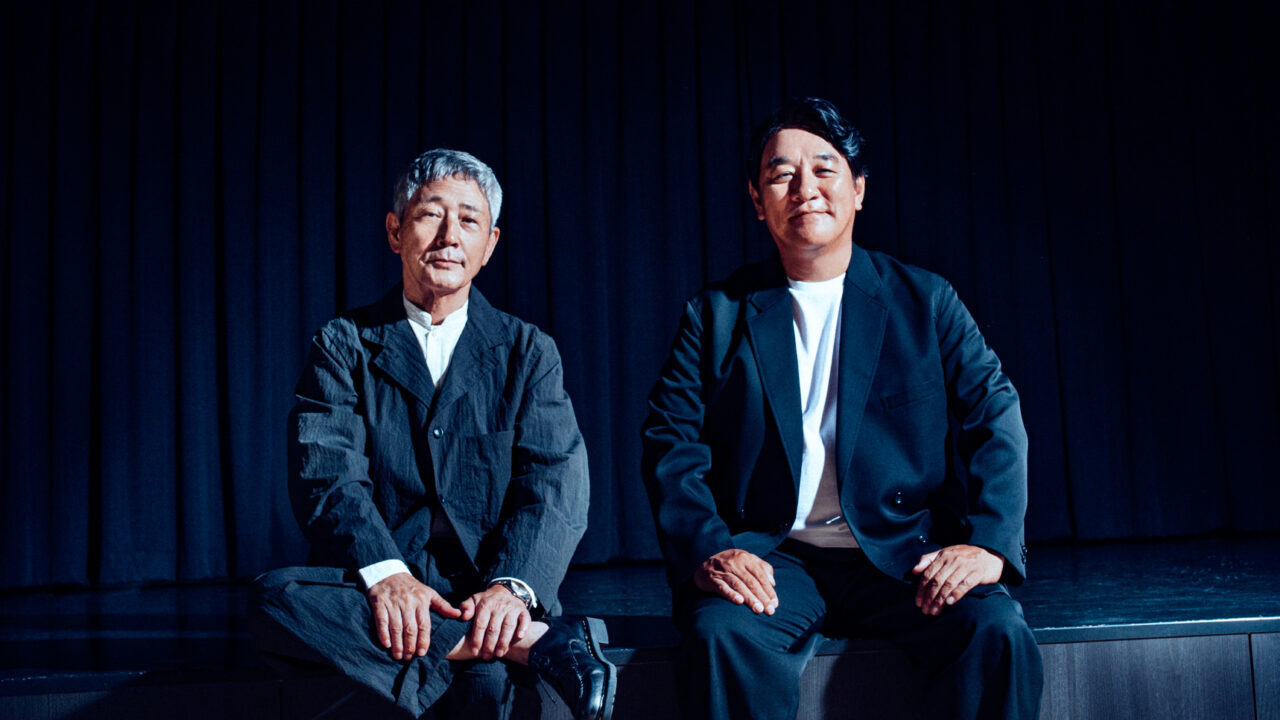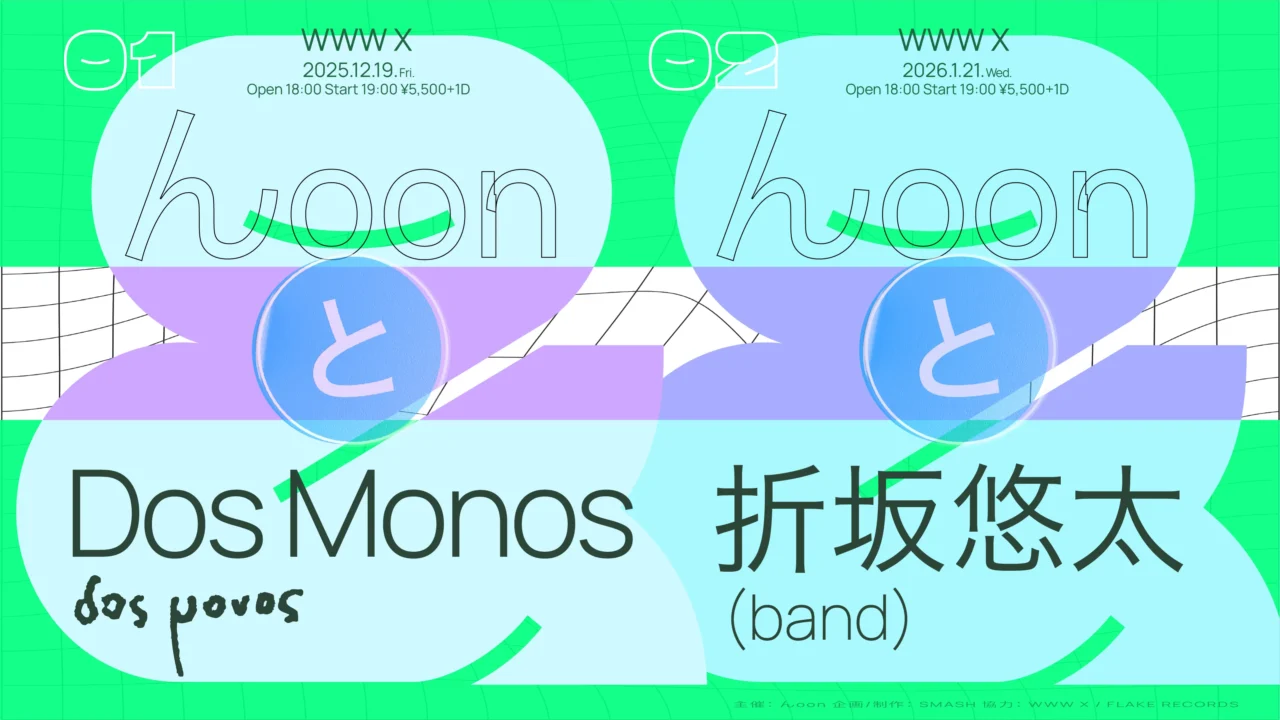A circle of friends connected by goo touch! The “FIST BUMP” corner of the radio program “GRAND MARQUEE” features people who live and enjoy Tokyo in a relay format.
On November 30, rakugo storyteller Shunputei Ikkyu introduces us to entertainment photographer Renji Tachibana. We asked him about his reasons for starting entertainment photography, his most memorable photo shoots, and his fascination with rakugo.
INDEX
I wanted to take pictures of the backstage rather than the stage
Celeina (MC): Mr.Tachibara was born in Saitama Prefecture.He studied under portrait photographer Mahaya Ono before starting his freelance career, and was selected for the first “Kitai sareru Wakate Shashinka 20nin Ten” in 1989. After many twists and turns, in May 1995, he began taking entertainment photos at Suzumoto Engeijo in Ueno, and now, as a leading entertainment photographer, he has photographed many performers, from the famous to the young.
Takano (MC): Is there a genre of entertainment photographer?
Tachibana: No, there is no such thing as an entertainment photographer. I used to call myself a regular photographer, but about five years ago, I consciously started calling myself an entertainment photographer.
Takano: So you are a pioneer. When did you first become interested in cameras?
Tachibana: It was during high school. Originally, I liked photography more than cameras, and I spent a lot of time in the darkroom making prints. So my interest in printing photographs came earlier than the camera itself.
Takano: It feels good to be floating.
Tachibana: Yes, it is. I turned on the red light and worked all the time, which is completely unthinkable nowadays.
Takano:There is a sense of doing something special, isn’t there?
Tachibana: Rather than doing something outside, I liked to stay in such places and work and create something.
Celeina:What led you to start taking performance photographs?
Tachibana: It was almost 30 years ago, and I was thinking about how I was going to live with the limitations of the portrait photography work I had been doing. At that time, as a kind of distraction, I went to the Suzumoto Engeijo in Ueno and saw rakugo live for the first time.
Celeina:Do you remember how you felt the first time you visited Suzumoto Engeijo?
Tachibana: It was Golden Week, and the seats were full. I was in the front row, at the very end of the lower row of auxiliary seats. The sleeves of the Suzumoto Engeijo were on the opposite side of the stage from me, so I had a good view of the comedians coming in and out of the sleeves. I remember that I wanted to take pictures of the comedians in their dressing rooms, so I went up to them and asked them for help.
Celeina: So you wanted to photograph comedians in their natural state.
Tachibana: Now, of course, I shoot a lot of koza, but I was originally a portrait photographer, so at first I wanted to photograph comedians in their dressing rooms, not in their koza.
Takano: So the atmosphere in the dressing room is totally different from the certain tension in the koza.
Tachibana: That’s right. The dressing room is a place where the comedians can both concentrate and relax in preparation for the koza, so it has a unique atmosphere. Each performer’s personality comes out differently from the koza, so I enjoyed that more.
INDEX
Photographing the last seven years of Master Danshi Tachikawa’s life
Celeina: I believe you have photographed many comedians so far, but what was the most memorable one?
Tachibana: It was shooting the last 7 years of his life with Master Danshi Tachikawa. For the first two years, when I went to shoot him and greeted him, I barely got a glimpse of him. Even so, I took his picture each time and handed it to him,one day, he called me “Tachibana” for the first time by name. He told me, “You can do whatever you want. I’ll let you take pictures whenever you come.” After that, I was allowed to take pictures at anytime I went to.
Takano: It’s a wonderful, chic sense of style that is very much like Master Danshi.
Tachibana: Although I kept quiet, I was happy to think that he was indeed looking at my photographs.
Takano: I read your interview with Mr. Tachibana the other day, and I heard that you were careful not to stress the comedians during the photo shoot.
Tachibana: The Koza itself is for the audience, not for the purpose of taking pictures. The main actor is always comedians, and I don’t want anything to distract their concentration. It may be a difficult thing to say, but we “shoot as if we were not shooting”. I do not actively go out to shoot, but rather I shoot based on the situation and the mood of the comedian. Sometimes there are days when I don’t shoot.
Takano: It is amazing that there are days when you go to shoot and don’t shoot. I understand that you try to wear black clothes as much as possible when shooting.
Tachibana: I am often in the middle of the audience and the performers, so I can’t help but be in their sight. It may be an exaggeration to say that I try to eliminate their presence, but I am conscious of creating a situation where the performers are not bothered by me.
Celeina:That is exactly the love you have for the comedians.
Tachibana: As I mentioned earlier, I would have left the world of photography if I had not encountered the performing arts when I was troubled. I think I am a photographer who was saved by the performing arts, and I definitely do it with a sense of gratitude and love.
Takano: That is a wonderful attitude. I would like to hear more, but let’s interrupt one song here. I asked Mr. Tachibana to choose a song that he would like everyone to listen to together on the radio at this time. May I ask the reason for the song selection?
Tachibana: I have a group that I myself produce, and when the group ends with a talk by the performer, I often use this song to end the talk in a pleasant atmosphere, so I chose this song.“Freedom” by LOVE PSYCHEDELICO.






















